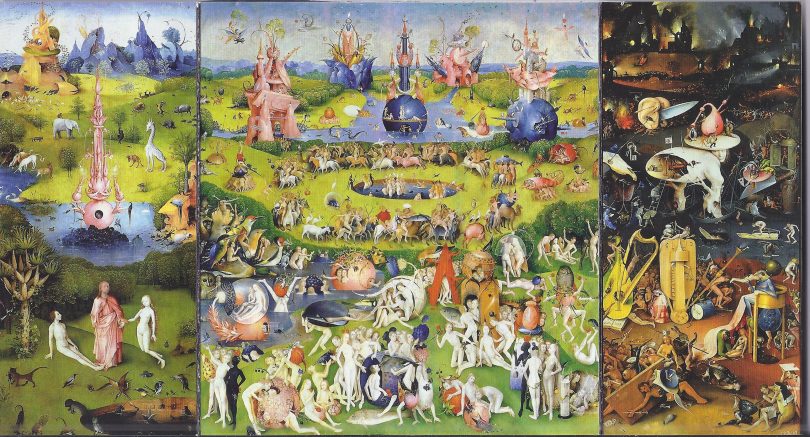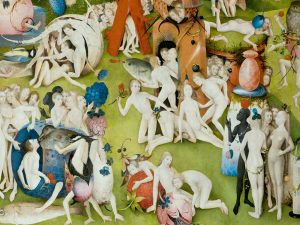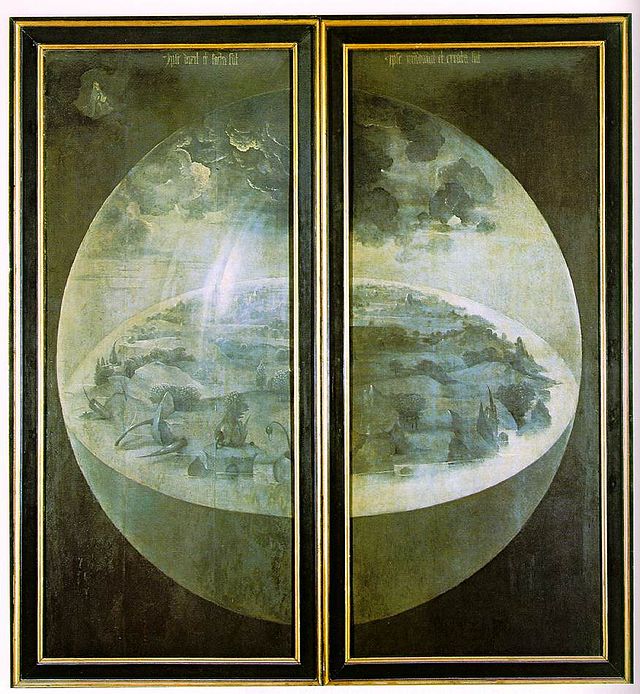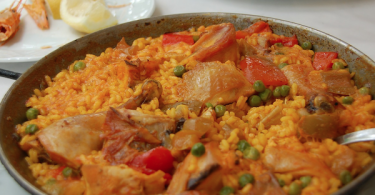Since the Prado museum opened its doors in 1819 it has been famous for its outstanding collection of masterpiece paintings. A very special painting in their collection is The Garden of Earthly Delights painted around 1500 by the Dutch painter Hieronymus Bosch. This provocative medieval painting whose main theme is sin and lust according to the medieval bible is even incredibly modern still nowadays. It consists of four panels that show the downfall of Adam and Eve with the middle piece being the highlight where human sin is expressed by Bosch showing all kinds of naked young men and women entwined in a medieval orgy in a luscious garden full of fantastic strange creatures. Today, ShMadrid will share with you the highlights of this masterpiece in the Prado Museum.
Related article: The Best Museums in Madrid
The Garden of Earthly Delights
The painting is a triptych with 4 different paintings showing the biblical story of Adam and Eve; the beginning of their life before sin, sin depicted in the garden of earthly delights and the final judgement symbolized by a dramatic image of catholic Hell on the right-hand side. The first painting is a grisaille and can only be seen when the triptych is closed so the outer panels come together. It shows an image of God creating the world, probably on the third day. God can be seen in the outside corner on the left and the world looks like a round crystal ball with the earth painted flat under a cloudy heaven. There are no animals yet created by God but there is already water and some kind of prickly plants created on earth. On top of both panels there is a latin phrase that says: “Ipse dixit et facta sunt. Ipse mandavit et creata sunt” coming from the bible and which means how God created the world and Adam and Eve; for he spoke and it was there, he commanded and they were created.
When the triptych (see main photo at the top of this article) is opened, you can see the three inside paintings flowing from left-to-right representing on the left Adam and Eve in the earthly paradise of Eden before they commit their sins, in the middle; the garden of the earthly delights with sinners and Hell depicted on the right-hand side of the painting. Art historians and art critics frequently interpret the painting as a didactic warning in medieval time of life’s temptations especially lust and sin. However, the complexity of its symbolism, particularly that of the central panel, has led to a wide range of different interpretations over the centuries.
Related article: Curiosities of the Spanish Capital
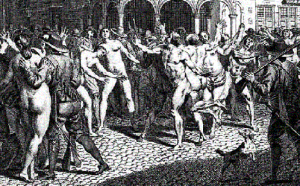
Photo via Pixabay
Some experts have mentioned that Bosch was on drugs while he painted his paintings, others, such as German art historian Wilhelm Worringer, mentioned in 1947 that Bosch was perhaps a member of a sect called the Adamites who were known for their free sexual lifestyle favouring polygamy and nudism but this theory has never been proved with any scientific evidence. Although most of the medieval symbolical images from the painting can be explained, the surreal middle part of the triptych will always be a kind of a mystery for most art critics. Perhaps this part will never be completely unravelled unless art experts discover any new background information about the painting. The fact is that it is an incredible original painting that you definitely should check out when you are studying in Madrid.
Have you seen the Garden of Earthly Delights?



